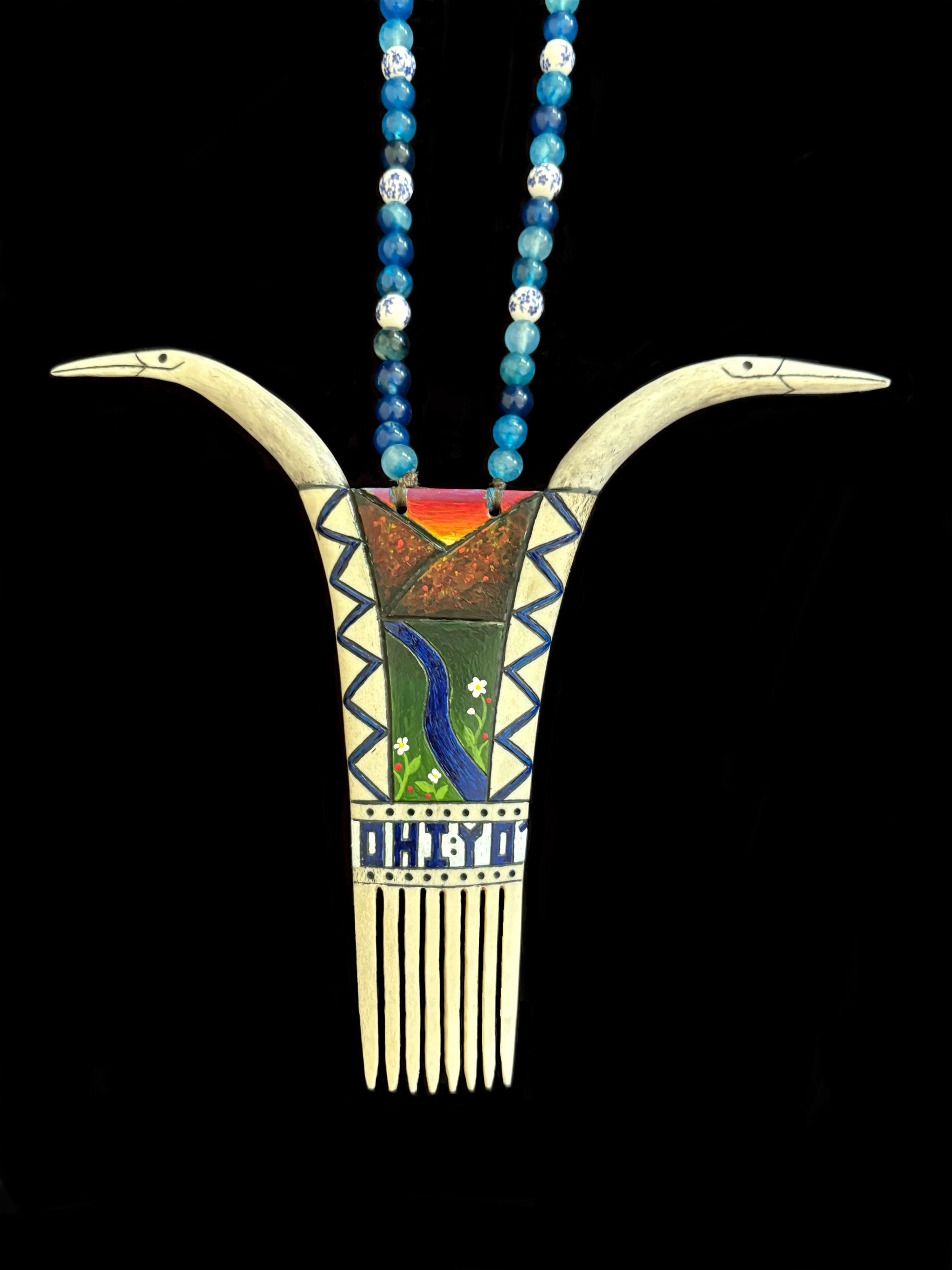Hodi:nohšo:nih Clan Mothers: Those Who Name Us in Allegany Territory
We’re honored to share this reflection from Randee Spruce, Curator of the Onöhsagwë:de’ Cultural Center, on the significance of name-givers and clan mothers in Hodinöhsö:ni’ life. Written in connection with a new project by our Núhi Grant recipient, Hayden Haynes, this piece highlights the sacred roles these women hold and the power of documenting their stories through image and art.
Portrait of Alexia John, Name-Giver of the Deer Clan, by Hayden Haynes (Seneca)
In Hodi:nöhšo:nih (People of the Longhouse) culture, our women carry many responsibilities as mothers, makers, and knowledge holders. The highest honor a Hodi:nohšo:nih woman can hold is becoming a clan mother — or here on the Allegany Territory, a name-giver. One of their most important roles is to give new children welcomed into the Longhouse their ögwë'ö:weh (real people) name.
This name holds deep significance to the Hodi:nöhšo:nih because names are inherited — it is both a great honor and a responsibility. When we conduct our ceremonies, this name is the only name that is used because it is what the Creator and the medicines know us by.
When we pass from this life into the next, we are greeted by the Creator who will know us by our ögwë'ö:weh name. This is what makes these women so powerful. They bring us that connection. It is also the responsibility of those who carry these names to fulfill their duties to the earth and to the people. We are taught to have love for one another, to steward the land in the way that the creator intended, and to raise our children with good minds and connections to the earth.
Documenting these women is an important way of honoring them and all they do for our people here on the Ohi:yo’ (Allegany) Territory of the Seneca Nation.
Hayden Haynes’s project, which involves carving antler necklaces for each of the eight clan mothers and photographing them, is reminiscent of an earlier painting series of clan mothers created in 1992 by world-renowned Seneca painter Carson Waterman. Without his paintings, their stories would remain only in oral memory. I believe that images often speak louder than words — and Hayden’s portraits of these women will be another powerful testament to the sacred responsibilities that they hold.
One day, this duty will be passed down to the next generation of women in the Coldspring Longhouse community. It is our hope that Hayden’s project helps preserve, uplift, and pass forward the wisdom these women carry—for the generations still to come.
Written by Randee Spruce, Curator of the Onöhsagwë:de' Cultural Center
Onöndowa'ga (Seneca), Godaë'ö:ga' (She is Heron Clan)
Ohi:yo’ (Allegany Territory of the Seneca Nation of Indians)









